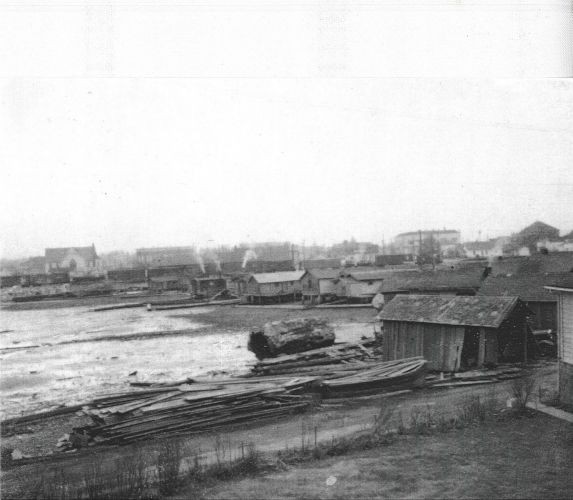Little Chicago from 1920 - 1957
By Trail Tales Docent Peyton Kane
Photo with permission of Anacortes Museum. Wally Funk collection #1310
After Anacortes was founded in 1890 it became a small town centered on Commercial Avenue between 1st Street to 10th Street. Its urban poor lived in a single row of homes that lined the north shore of Cap Sante cove tidelands that became known as Little Chicago. This slum, first evidenced from the federal census of 1920 was home to poor residents till1957.
Some of the residents of Little Chicago were deepsea fishermen that home ported in Anacortes during the off season. These men hailed mostly from Norway. Other members of the community worked at the nearby lumber mills that bracketed the cove, either the Morrison Mill off of 15th Street or the Anacortes Lumber & Box Company off of 4th Street.
No one has ever stated why this slum was called Little Chicago. Usually, Norwegian immigrants lived for a few years in the mid-west before moving out to the west coast. The remaining residents were born in the Midwest. Perhaps, their common mid-western origin became the source of the name, Little Chicago.
All Little Chicago residents were squatters. Initially, the tidelands belonged to Cap Sante Land Company. In 1928, the Port of Anacortes purchased most of the tidelands of Cap Sante cove in order to dredge out a long channel to deep water and allow small salmon fishing boats to have a safe harbor in the winter. Since none of the residents of Little Chicago paid rent to the Port for their addresses they were periodically evicted. However, new squatters always took their places.
Cap Sante cove was not a desirable place to live. An unknown author wrote in the newspaper on June 18, 1925:
“From a scenic standpoint, the Cap Sante waterway would be a great advantage. At high tide the view across the bay from Fifteenth and Commercial is beautiful, but at low water sight of a long, slimy flat, covered with tin cans and refuse which is unable to find an exit is far from beautiful - it is disgusting.”
Until the City of Anacortes built a sewage plant in 1965, all the sewage pipes of the City led to the nearest water, either the Guemes Channel or the Cap Sante Harbor – so Little Chicago fronted a parcel of tidelands laced daily with sewage.
Little Chicago community came to an end in 1957 when the Port of Anacortes wanted to expand the small boat harbor. The spoils from dredging were placed on the land at the edge of the tidewater where the homes formerly existed. All the residents were moved into other quarters in town. All of the hovels were destroyed by fire, demolition, or removal.
By accepting you will be accessing a service provided by a third-party external to https://skagitbeaches.org/



